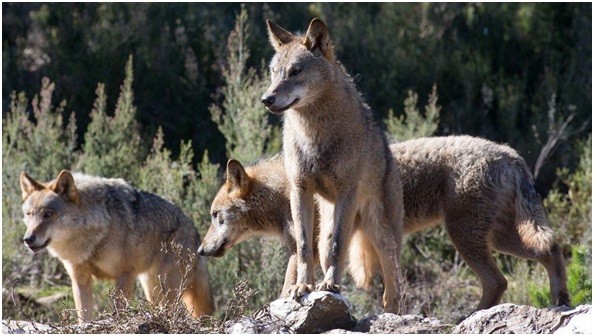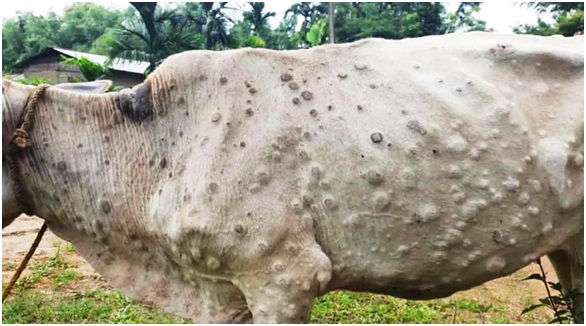Lunar Codex (The Guardian)

- 03 Aug 2023
Why in the News?
The Lunar Codex program has the potential to bestow immortality upon an assorted collection of human-created art.
About Lunar Codex:
- The Lunar Codex is a remarkable collection of art curated by artists worldwide, intended to endure on the lunar surface as a timeless testament to human creativity, even amid tumultuous times like wars, pandemics, and economic crises.
- At the helm of this endeavor is Samuel Peralta, a semi-retired physicist and art enthusiast from Canada.
- Comprising diverse forms of digitized art, the Lunar Codex will be dispatched to the moon to serve as a permanent record of human ingenuity. Memory cards and NanoFiche, an updated 21st-century version of film-based microfiche, guarantee the safe arrival of these artistic expressions to the lunar surface.
- Carefully assembled from contributions by 30,000 artists, writers, filmmakers, and musicians representing 157 countries, the collection spans an array of art forms, including images, magazines, books, podcasts, movies, and music.
- The art is divided into four capsules:
- The first capsule, the Orion collection, has already encircled the moon after being launched aboard NASA's Artemis 1 mission via the Orion spacecraft last year.
- In the months ahead, multiple lunar landers will transport the Lunar Codex capsules to distinct locations, including craters at the moon's South Pole and the lunar plain known as Sinus Viscositatis, ensuring the enduring legacy of human creativity on Earth's celestial neighbor.
JALDOST airboat (The Hindu)

- 03 Aug 2023
Why in the News?
The National Aerospace Laboratories (NAL) recently revealed its latest creation, the JALDOST airboat.
What is JALDOST?
- JALDOST is an innovative airboat specifically designed for water operation, aimed at effectively removing excess aquatic weed and floating waste from various water bodies.
- The airboat features a closed, airtight pontoon-type hull, ensuring its inherent unsinkability.
- Notably, the JALDOST incorporates a hybrid propulsion system, combining air propulsion and paddle wheel propulsion, making it versatile and efficient in its movements.
- Operating through weed with ease, JALDOST serves as an ideal platform for collecting and transporting these undesirable aquatic plants to the shore.
- It achieves this through a steel mesh belt conveyor system situated at the front, which gathers the waste and deposits it on the horizontal deck conveyor.
- Upon reaching the shore, the collected waste is efficiently unloaded using a rear conveyor system, facilitating easy transfer to trucks or tractors.
- The National Aerospace Laboratories (NAL) has introduced two versions of the airboat, namely JALDOST Mark-1 and an upgraded version, JALDOST Mark-2, further enhancing its capabilities.
Iberian wolf (DownToEarth)

- 03 Aug 2023
Why in the News?
As per the regional government, the Iberian wolf (Canis lupus signatus) has been declared extinct in the historical region of Andalusia, located in the southernmost part of Iberia, since the year 2020.
About the Iberian Wolf:
- The Iberian wolf is a subspecies of the Grey wolf, distinguished by its prolonged isolation from other wolf populations for over a century.
- With the largest wolf population in Western Europe, this magnificent species is native to the Iberian Peninsula, encompassing Spain and Portugal.
- Thriving in diverse habitats, Iberian wolves inhabit forests, inland wetlands, shrublands, grasslands, pastures, and mountainous areas.
- These wolves lead a social lifestyle, living, hunting, and traveling in small packs.
- Each pack includes the alpha male and female, along with their young and older offspring.
- The alphas serve as the pack leaders, responsible for establishing territory, selecting den sites, tracking down, and hunting prey.
- Primarily carnivorous, the Iberian wolf's diet comprises various animal species.
- With regard to conservation, the Iberian wolf holds the status of "Vulnerable" according to the International Union for Conservation of Nature (IUCN).
PM Street Vendor’s AtmaNirbhar Nidhi (PM SVANidhi) Schemer (Indian Express)

- 03 Aug 2023
Why in the News?
The Union Housing and Urban Affairs Ministry has recently announced a fresh target for its PM SVANidhi scheme, focusing on empowering street vendors.
About PM Street Vendor’s AtmaNirbhar Nidhi (PM SVANidhi) Scheme:
- Launched on June 01, 2020, by the Ministry of Housing and Urban Affairs, the PM SVANidhi Scheme aims to assist street vendors affected by the Covid-19 lockdown in reviving their livelihoods.
- As a micro-credit initiative, it provides street vendors with a collateral-free loan of Rs. 10,000 at a low-interest rate (below 12%) for one year, facilitating their financial recovery.
- Originally scheduled until March 2022, the scheme has now been extended till December 2024 with a focus on expanding the affordable loan corpus, encouraging digital transactions, and promoting holistic socio-economic development for street vendors and their families.
- Eligibility for the loan requires street vendors who were vending on or before March 24, 2020, and hold a certificate of vending issued by the Town Vending Committees (comprising local authorities and vendors) after conducting a survey.
- The scheme offers several benefits, including an interest subsidy of 7% per annum on timely loan repayment, no penalty on early repayment, cash back incentives up to Rs. 100 per month to promote digital transactions, and the possibility of credit limit escalation for prompt loan repayment.
- The Small Industries Development Bank of India (SIDBI) serves as the implementation agency for the scheme, ensuring efficient delivery and monitoring of financial support to street vendors across the country.
Lumpy Skin Disease (LSD) (Indian Express)

- 03 Aug 2023
Why in the News?
The Telangana High Court's division bench recently conveyed its discontentment over the absence of specific information regarding measures taken to manage the outbreak of Lumpy Skin Disease (LSD) in cattle.
What is Lumpy Skin Disease (LSD):
- Lumpy Skin Disease (LSD) is a highly infectious viral disease that affects cattle, ranging from acute to chronic in nature.
- It is caused by the lumpy skin disease virus (LSDV), belonging to the genus Capripoxvirus within the poxviridae family (related to smallpox and monkeypox viruses), but it is not zoonotic, meaning it does not spread to humans.
- Symptoms of LSD include the enlargement of lymph nodes, resulting in lumps on the cattle's skin, primarily appearing on the head, neck, limbs, udder, genitalia, and perineum.
- The cutaneous nodules, usually 2–5 cm in diameter, may develop into ulcers and scabs over time.
- Other signs of infection include high fever, reduced milk yield, nasal and ocular discharge, salivation, loss of appetite, depression, damaged hides, emaciation, infertility, and abortions.
- Transmission occurs through blood-feeding insects such as certain flies, mosquitoes, and ticks, as well as the movement of affected animals and contaminated equipment.
- Direct animal-to-animal transmission can also occur in some cases.
- While no direct antiviral treatment is available for LSD, supportive care is provided to infected animals, including the use of antibiotics, painkillers, and wound care sprays to alleviate symptoms.
- Vaccines are used to control disease transmission, as there is no specific cure.
- LSD is economically significant as it can lead to temporary reductions in milk production, temporary or permanent sterility in bulls, hide damage, and, in some instances, fatalities among the affected cattle population.
